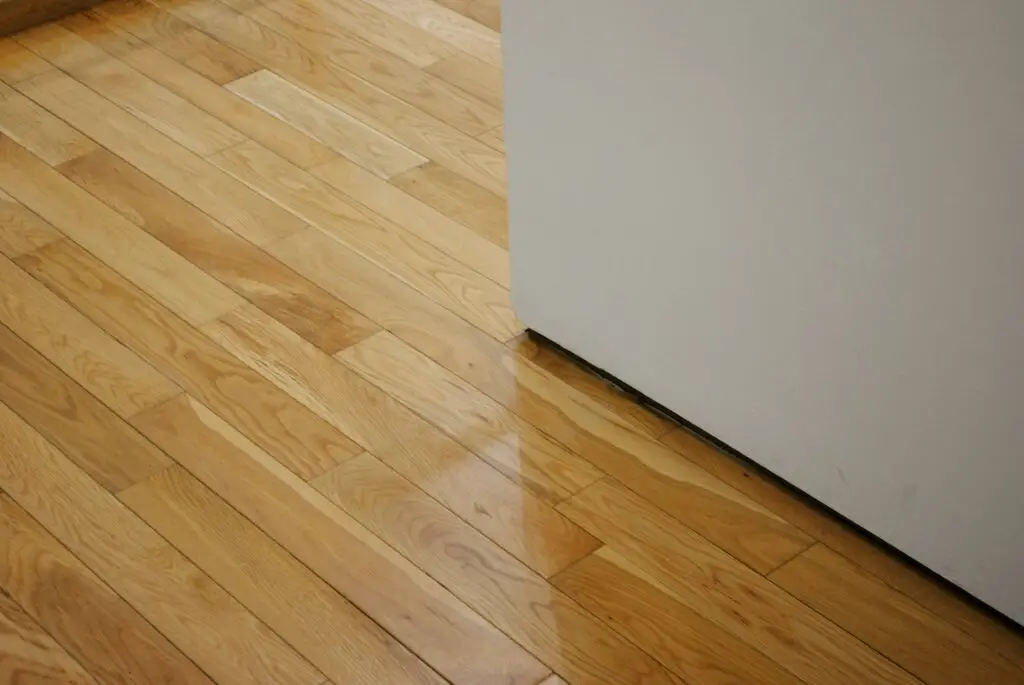The finish on your hardwood floor is much more than just a surface coating; it’s the primary protective barrier against daily wear and tear, spills, and scratches. It also significantly impacts the aesthetic appeal, maintenance requirements, and overall longevity of your floors. With a variety of finishes available, each offering unique characteristics, choosing the best option can seem daunting. This guide will delve into the most popular types of hardwood finishes, their respective pros and cons, and how to select the ideal one based on your lifestyle and the specific demands of your home.

Types of hardwood finishes
Hardwood floor finishes generally fall into categories based on their chemical composition and how they interact with the wood. Some form a protective layer on top, while others penetrate into the wood fibers.
Oil-based polyurethane
Description: This is a traditional and widely used finish, made with synthetic resins, plasticizers, and solvents. It forms a hard, protective film on the surface of the wood. It imparts an amber tint to the wood, which deepens over time.
Water-based polyurethane
Description: A more modern alternative to oil-based poly, this finish is made with acrylics and other resins suspended in water. It creates a clear, non-yellowing film on the surface, preserving the natural color of the wood.
Penetrating oils
Description: These finishes are composed of natural oils (like tung oil, linseed oil) that soak into the wood fibers, hardening within them rather than forming a layer on top. They enhance the natural grain and texture of the wood.
Hardwax oils
Description: A hybrid of penetrating oils and waxes (like carnauba or beeswax). They penetrate the wood like oils but also leave a very thin, durable, breathable, and natural-looking protective layer on the surface.
Pros and cons of each finish
Understanding the advantages and disadvantages of each finish type is crucial for making an informed decision.
Oil-based polyurethane
- Pros:
- Highly Durable: Creates a very hard, tough surface that is resistant to scratches and abrasion.
- Cost-Effective: Often more affordable per gallon than water-based options.
- Ambering Effect: Many homeowners appreciate the warm, golden glow it gives to wood floors, which deepens over time.
- Good Water Resistance: Provides a strong barrier against spills when properly applied.
- Cons:
- Strong Odor: Releases strong, lingering VOC (volatile organic compound) fumes during application and curing, requiring good ventilation.
- Longer Drying Time: Takes 8-10 hours between coats and several days to fully cure before heavy use.
- Yellowing: The amber tint continues to deepen and can yellow lighter wood species over time.
- Repair Challenges: Spot repairs are difficult; if one area is damaged, the entire floor may need to be sanded and refinished to avoid noticeable patches.
Water-based polyurethane
- Pros:
- Low VOCs/Low Odor: Much less noxious fumes, making it more user-friendly and environmentally friendly.
- Faster Drying Time: Dries quickly (2-4 hours between coats), allowing for multiple coats in a single day.
- Non-Yellowing: Maintains the natural color of the wood, ideal for light or white-washed floors.
- Good Durability: Modern formulations offer excellent scratch and abrasion resistance, comparable to oil-based.
- Cons:
- Higher Cost: Generally more expensive per gallon than oil-based polyurethane.
- Less Build-Up: May require more coats (often 3-4) to achieve the same level of protection as 2-3 coats of oil-based poly.
- Grain Raising: Can cause the wood grain to raise slightly after the first coat, requiring light sanding between coats.
- Repair Challenges: Similar to oil-based, spot repairs are difficult without a noticeable line.
Penetrating oils
- Pros:
- Natural Look and Feel: Enhances the wood’s natural grain and texture, creating a matte, organic appearance.
- Easy Spot Repair: Damaged areas can often be sanded and re-oiled without needing to refinish the entire floor.
- Eco-Friendly: Many options are made from natural, renewable resources and have very low VOCs.
- Durability: While not forming a surface layer, the hardened oil within the wood provides good wear resistance.
- Cons:
- Less Stain Resistant: More susceptible to water spots and stains than film-forming finishes, requiring immediate spill cleanup.
- More Frequent Reapplication: May need re-oiling more often in high-traffic areas (every 1-3 years) compared to polyurethanes.
- Initial Drying Time: Can take longer to fully cure, sometimes weeks.
- Not for All Woods: Not ideal for very light or white-washed floors as they can slightly deepen the wood’s natural color.
Hardwax oils
- Pros:
- Combines Benefits: Offers the natural look and feel of penetrating oils with the added protection of a thin wax layer.
- Breathable: Allows the wood to breathe, which can be beneficial in fluctuating humidity.
- Excellent Spot Repair: Very easy to repair damaged areas without full refinishing.
- Water and Stain Resistance: Provides better resistance to spills than pure penetrating oils due to the wax component.
- Low VOCs: Generally very low in VOCs.
- Cons:
- Higher Initial Cost: Often the most expensive option upfront.
- Requires Maintenance: Needs periodic reapplication or specific maintenance products to replenish the wax layer, especially in high-traffic areas (every 3-5 years).
- Limited Sheen Options: Typically only available in matte or very low-sheen finishes.
How to choose based on lifestyle and use
The best hardwood floor finish for your home depends on a balance of your aesthetic preferences, how you live, and your willingness to maintain the floors.
- For Busy Households (Kids, Pets, High Traffic):
- Recommendation: Oil-based polyurethane or modern, high-grade water-based polyurethane. Their hard film layers offer superior resistance to scratches and spills. Consider a satin finish, as it hides imperfections better than glossy.
- Consideration: While durable, deep scratches may still require a full refinish.
- For a Natural, Organic Aesthetic:
- Recommendation: Penetrating oils or hardwax oils. These finishes enhance the wood’s natural beauty and provide a matte, tactile feel.
- Consideration: Be prepared for diligent immediate cleanup of spills and more frequent reapplication, especially in high-traffic zones like kitchens.
- For Ease of Repair and Maintenance:
- Recommendation: Penetrating oils or hardwax oils. Their ability to be spot-repaired without full sanding is a huge advantage for isolated damage.
- Consideration: Requires specific cleaning products and more frequent light re-oiling/waxing compared to polyurethane.
- For a Quick Installation/Low Odor:
- Recommendation: Water-based polyurethane. Its fast drying time and low VOCs make for a quicker, less disruptive installation.
- For Classic, Warm Look with Durability:
- Recommendation: Oil-based polyurethane. If you love the ambering effect and don’t mind the stronger fumes and longer drying time, it’s a solid, durable choice.
- For Specific Wood Species:
- Light Woods (e.g., Maple, Ash, White Oak): If you want to maintain their light appearance, water-based polyurethane or certain types of hardwax oils are best, as they won’t yellow the wood.
- Dark Woods (e.g., Walnut, Brazilian Cherry): Oil-based poly’s ambering effect often complements darker woods well.
Ultimately, envision how your family uses the space and how much maintenance you are willing to commit to. For most active households, polyurethane (especially high-quality water-based) offers the best balance of durability and practicality. For those who prioritize a natural look and are prepared for specific, ongoing care, oil and hardwax finishes provide unmatched beauty and repairability.
Ready to choose the perfect finish for your hardwood floors? Sky Hardwood Floors specializes in expert hardwood floor finishing, offering a wide range of options tailored to your lifestyle, aesthetic preferences, and budget. Contact us today for a free consultation and let us help your floors shine beautifully for years to come!
